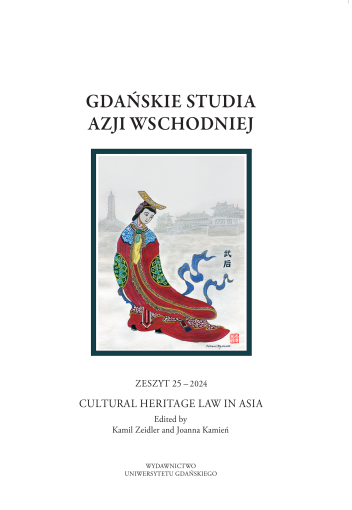National treasures (国宝, kokuhō) in Japanese law: From Zen Buddhism to Living National Treasures
National treasures (国宝, kokuhō) in Japanese law: From Zen Buddhism to Living National Treasures
Author(s): Ronan BretelSubject(s): Fine Arts / Performing Arts, Museology & Heritage Studies, Other, Sociology of Culture
Published by: Wydawnictwo Uniwersytetu Jagiellońskiego
Keywords: Japan; jūbun; kokuhō; Living National Treasures; national treasures
Summary/Abstract: The concept of ‘national treasure’(國寶, kokuhō) appeared in Japanese law in 1897. But it was not until the Law of 30 May 1950 that it was backed by a real legal regime. This transliteration is the modernised version of 國寶, originating in Chinese Buddhism, in which the Sōtō tradition speaks of 重國寶, Jūkokuhō, ‘important treasure of the country.’ The link between movable cultural heritage and Japan’s national history also revolves around the central role played by the ‘three sacred treasures of Japan’ (三種の神器). Since 1950, the concept, which is indifferent to the oppositions between movable and immovable, tangible and intangible, has been developed in the light of the new categories of heritage that have emerged. The expression has even left the strict confines of the law and entered everyday language to designate ‘conservators of important intangible cultural property’ (重要無形文化財保持者), commonly known as ‘Living National Treasures.’
Journal: Gdańskie Studia Azji Wschodniej
- Issue Year: 2024
- Issue No: 25
- Page Range: 44 - 59
- Page Count: 16
- Language: English

